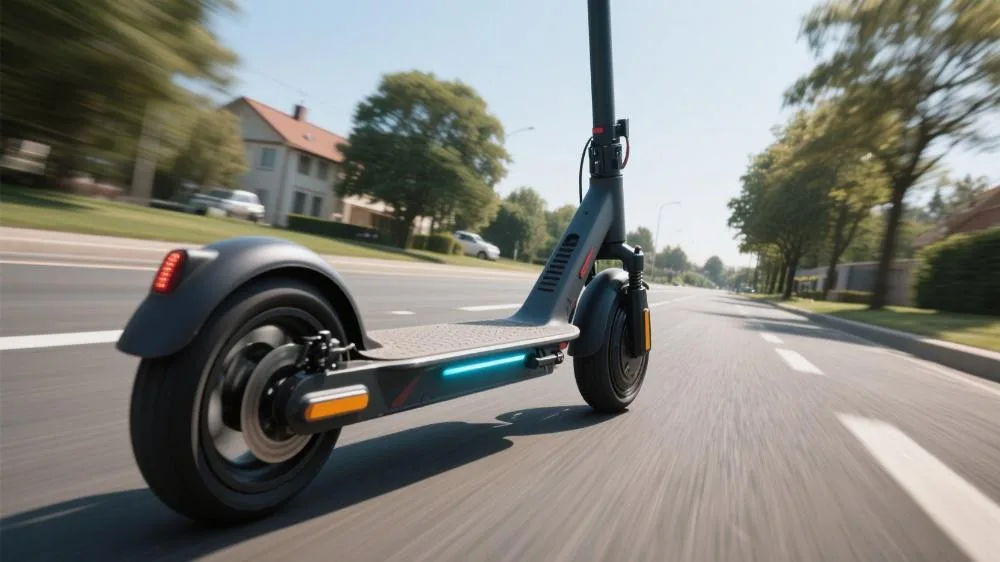how fast can an electric scooter go

Across European and American cities, electric scooters have become the preferred daily commute solution for millions of workers and students. How fast can an electric scooter go? According to the European Transportation Agency’s (ETA) 2025 market report, average cruising speeds for consumer-grade scooters under real road conditions range between 22-28 km/h (14-17 mph). Test data from specialist platform novascooter reveals that 85% of market models comfortably reach the EU standard speed limit of 25 km/h (15.5 mph).
Speed experiences vary significantly across usage scenarios. During morning rush hours, frequent stops and traffic congestion can reduce actual speeds to 18-20 km/h (11-12 mph), while on weekend rides along empty bike lanes, many riders report maintaining comfortable speeds of 28-30 km/h (17-19 mph). Notably, 2025 testing by Germany’s Transportation Research Institute shows that a 500W motor scooter carrying a 70kg (154lbs) rider requires an average of 4.2 seconds to accelerate from standstill to 25 km/h on flat terrain.

Key Factors Affecting Speed Performance
Hardware Configurations Determine Performance Ceilings
- Motor Power Impact
- 350W basic models: Ideal for flat urban roads, max speed ~22 km/h (14 mph)
- 500W mainstream models: Handles mild inclines better, max speed 28 km/h (17 mph)
- 800W performance models: Significant hill-climbing improvement, max speed 35 km/h (22 mph)
- Battery System Nuances
- 36V 10Ah battery: 40km (25mi) range but noticeable voltage drop at high speeds
- 48V 13Ah battery: More stable high-speed performance, 10-15% speed increase
- 52V 15Ah premium setup: Consistent power delivery, ideal for long commutes
- Often Overlooked Tire Selection
- 8.5″ solid tires: Low maintenance but pronounced vibration at speed
- 10″ pneumatic tires: 30% better high-speed stability (recommended above 28 km/h)
- Honeycomb tires: Balance comfort and traction, significantly improve wet weather safety
Environmental Factors and Riding Habits
Terrain Impact Data:
- 5° incline: 40-50% speed reduction
- Downhill sections: Note most scooters have speed governors
- Cobblestone surfaces: Reduce speed by 20% for safety
Weight and Speed Correlation:
- Every 10kg (22lbs) added: Increases acceleration time by 0.5 seconds
- At maximum load: Top speed decreases by 3-5 km/h (2-3 mph)
- Bag placement: Rear-mounted bags affect stability more than front
Temperature Effects:
- Below 10°C (50°F): 15-20% battery efficiency drop
- 25°C (77°F) ideal: Peak performance achieved
- Heat warning: Sustained 35°C+ (95°F) may trigger battery protection
Speed Requirements for Different User Groups
Urban Commuters’ Balanced Choice
Typical Commute Analysis:
- 5-8km (3-5mi) medium distance
- Mixed road conditions
- Rush hour travel
Speed Optimization Tips:
- Select 500W motor + 48V battery combination
- Maintain tire pressure at 50-55 PSI
- Use sport mode to save 10% commute time
- Route planning to avoid steep hills and congestion
Safe Speed Strategies:
- 15 km/h (9 mph) limit in pedestrian zones
- 22-25 km/h (14-15 mph) recommended on bike lanes
- Reduce to 10 km/h (6 mph) approaching intersections
Performance Enthusiasts’ Pursuits
Legal Modification Guidelines:
- Controller software upgrades within legal limits
- High-efficiency bearing replacements
- Weight distribution optimization
- Auxiliary lighting systems for night safety
Closed-Course Testing:
- Professional riders under ideal conditions
- Modified 800W motors reach 42 km/h (26 mph)
- 0-30 km/h (0-19 mph) acceleration in 3.8 seconds
- Emergency braking distance under 8m (26ft)
Critical Legal Notes:
- Speed limiters must remain active on public roads
- Modifications may void warranties
- Speeding fines up to €300 ($320)
Safe Speed Enhancement Methods
Compliant Performance Optimization
- Maintenance Speed Boost
- Weekly brake responsiveness checks
- Monthly bearing and hinge lubrication
- Quarterly high-performance brake pad replacement
- Maintain battery charge between 20-80%
- Riding Posture Adjustments
- Forward lean for better acceleration
- Bent knees absorb road vibrations
- Relaxed arms for agile steering
- Focus ahead to anticipate obstacles
- Smart Accessories
- Tire pressure monitoring systems
- GPS speed loggers
- Vibration alert devices
- High-lumen daytime running lights
Mandatory Safety Protocols
Protective Gear Checklist:
- EN1078 certified helmet (essential)
- Motorcycle gloves (slip-resistant)
- Elbow/knee pads (recommended above 25 km/h)
- Reflective vest or safety lights (night riding)
Dangerous Behaviors: × One-handed phone use × Noise-isolating headphones × Running red lights or wrong-way riding × Operating under influence
Monthly Safety Checklist:
- Brake response time <0.5 seconds
- Visible tire wear indicators
- All fasteners securely tightened
- Functional lighting systems
- Locking mechanisms engaged
Future Technology Trends
2025-2028 Speed Innovations
- Intelligent Speed Regulation
- GPS-based automatic speed adjustment
- School zone auto-reduction to 15 km/h
- Higher speeds unlocked in designated lanes
- Next-Gen Powertrains
- 95%+ efficient hub motors
- Graphene batteries for faster charging
- Wireless charging at transit stops
- Safety Assist Systems
- Forward collision warning
- Blind spot monitoring
- Automatic emergency braking
Regulatory Developments
Expected Policy Changes:
- Tiered speed licensing systems
- Mandatory speed warning devices
- Dedicated scooter lane networks
Insurance Implications:
- Speed-related accidents excluded
- Modified vehicles require declaration
- Shared scooter speed data traceability
